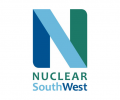Industry Insight
The nuclear sector needs to act now to capitalise on the benefits that ‘digital twinning’ can deliver, suggests Frazer-Nash’s Harvey Johnson.
A digital twin is a digital model of a process that helps optimise or predict assets’ or businesses’ performance. The benefits of digital twin technology in driving efficiencies is rapidly being realised in other sectors. The UK nuclear sector, with its highly technically skilled workforce and world leading academic partnerships, currently has the opportunity to ‘lead the way’ in this innovative technical approach, achieving cost savings for operators, service companies and small and medium enterprises (SMEs) alike. However, to capitalise on the potential of this opportunity, we must invest in the necessary skills and capacity now. This will allow the UK industry to lead the global trend, and to reap the benefits that increasing digital and asset efficiencies will deliver.
With the drive for cost reduction, improvements in efficiency and automation across the nuclear sector, there is a market need for digital twin technology. Analysis undertaken by Frazer-Nash has estimated that a £3.7 billion saving could be made over the 60-year lifetime of the UK’s proposed 16 GWe fleet. A digital twin of a nuclear power station can monitor the integrity, efficiency or protection system performance of its high risk systems, enabling the rapid prediction of future plant condition, and ultimately driving maintenance cost savings.
Digital twin technology is not, however, solely applicable to large scale nuclear plant and equipment. It has the vast potential to benefit the wider nuclear supply chain by informing decision-making processes. When there are complex decisions to make or a trade-off between two or more options, the digital twin provides a virtual area that enables you to explore options quickly, optimise outcomes and arrive at a balanced compromise. It allows the complex interaction of people, plant, processes and environment to be modelled and interventions to be implemented. Ultimately, this empowers an organisation to learn and store knowledge about how its assets behave, in order to improve operational strategies and reduce risk. Gone are the days when high level business decisions had to be taken based on subjective judgments alone.
To realise the benefits of digital twinning in the nuclear industry, Frazer-Nash has identified a number of key actions that businesses, academic institutions and local enterprise partnerships (LEPs) can take, to help improve their business performance through the incorporation of digital twins:
• Identify systems or operations where cost and/or efficiency savings could be made with the development of a digital twin. Such systems include processes with variable quality outputs, those suffering from through life degradation and redundancy, or complex high level decisions with many input variables.
• Define the specific use case up front and capture the requirements for your digital twin. Suggested uses would include through-life asset management decisions on large plant components; or high level business strategy decisions such as end of generation planning, new build construction programming or workforce/supply chain planning
• Define the assumptions that will be made in the model and the sensor data that will be used as a system input. The digital twin should be highly tailored and tuned towards the specific aspect of the system to be modelled, rather than just a ‘general’ digital twin of an asset. Modelling projects can face difficulties when the right question isn’t being answered or the question being answered is at the wrong level of granularity. It all comes down to assumptions: all models have approximations and assumptions, and these will only be valid when looking at a specific problem.
• Create validated simple models of the system, and establish the safe performance limits of the system. This should include a set of quantitative key performance indicators. The complexity of the system can then be built up methodically if required.
For businesses to succeed at creating their ‘first of a kind’ digital twin, it will be vital to collaborate effectively with partners who have the required expertise and experience in developing digital twin capability. It is only through bottom up investment, cross disciplinary collaboration and a sustained focus on the development of digital twin capability that we can ensure this service delivers its potential benefits to the industry, and allows organisations to thrive in ever more commoditised nuclear markets.
If you would like to learn more about this article, or Frazer-Nash’s proven approach to developing digital twinning capabilities, please contact Harvey Johnson at h.johnson@fnc.co.uk

